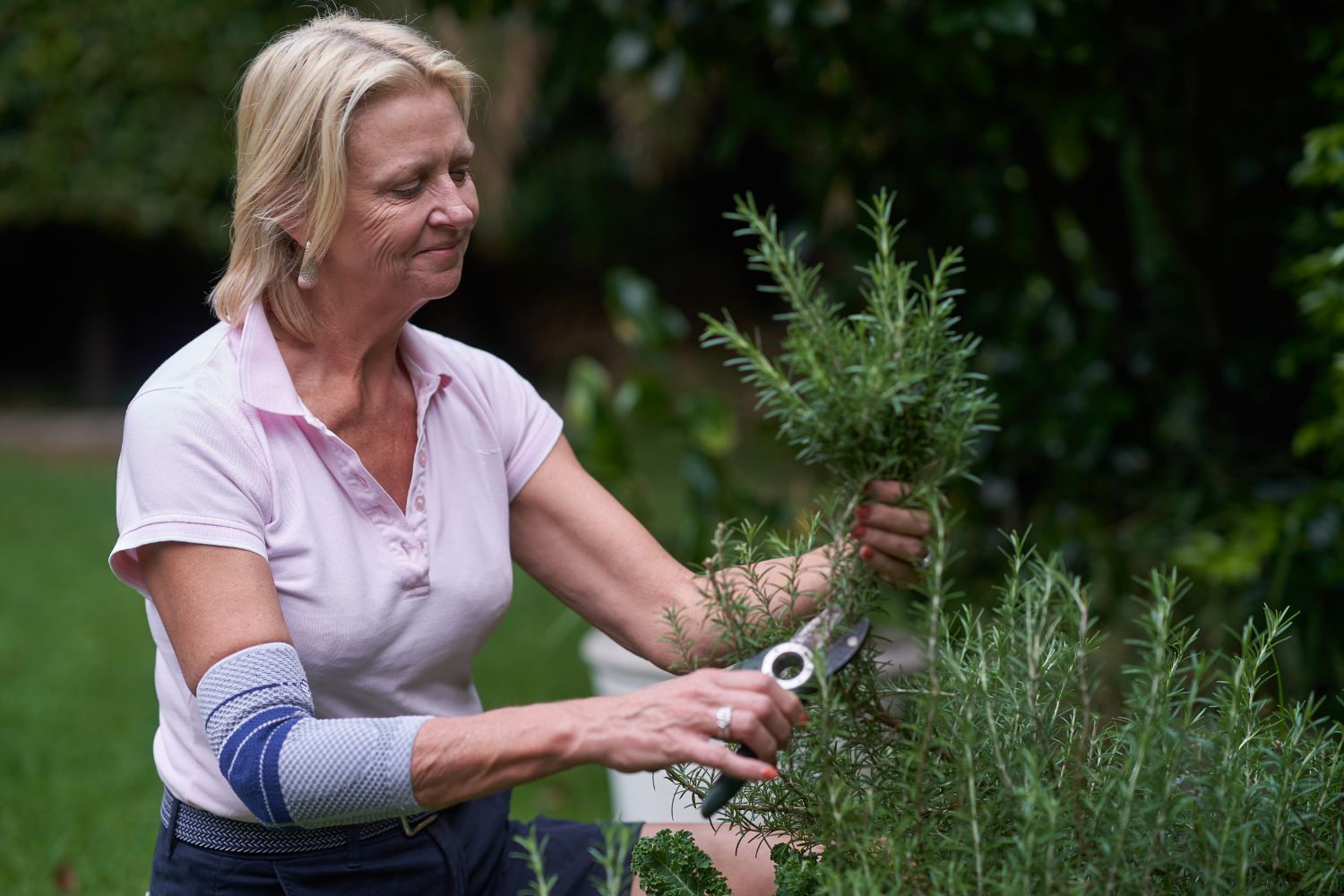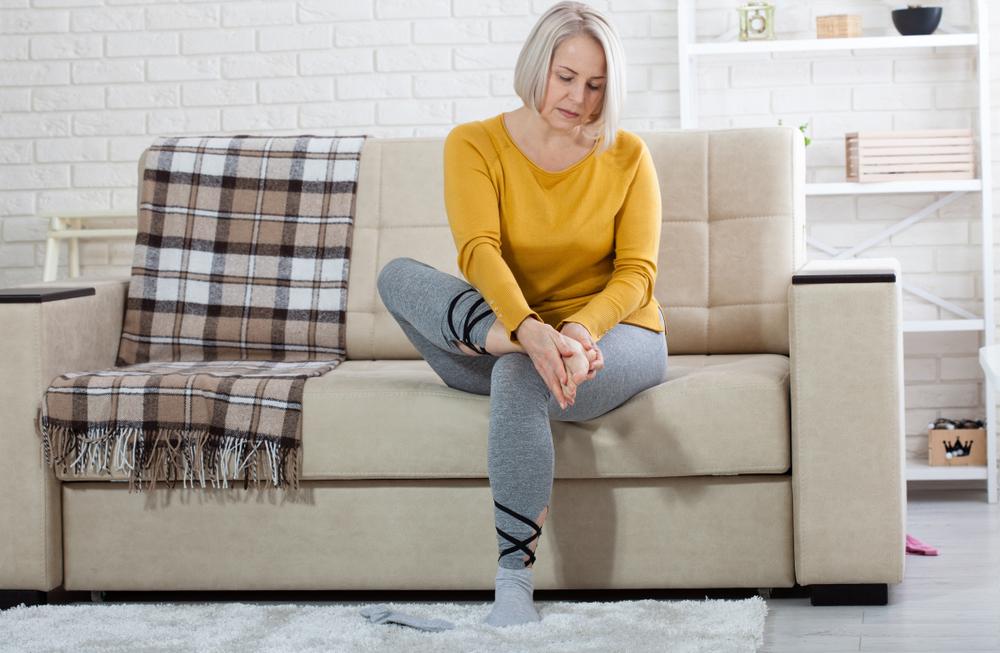With spring in full swing, many of us are spending more time maintaining and beautifying our gardens. Unfortunately, all the work it takes to plant an enviable yard can take a toll on the body. So, to help you stay safe and avoid aches, here are our tips for pain-free gardening.
1. Warm up
Gardening is a workout, technically considered a moderate-intensity physical activity like swimming or cycling. And just like with any workout, preparing with a quick warm-up is a good idea to avoid aches and minor injuries. Before heading out to the garden, take 5-10 minutes to jog on the spot and do some shoulder rotations, squats, finger flicks, and stretches. You’ll kick start oxygen and nutrient delivery to the muscles, preparing them for all the planting, raking, mowing, and trimming required for the day.
2. Take it easy
It can be tempting to get as much done at once as possible. But to protect your joints, we’d advise:
- Pacing yourself: don’t take on too many tasks in one day. Prioritise urgent tasks, and don’t hesitate to ask for help if you’re struggling to keep up with your garden’s demands.
- Taking frequent breaks. A quick break every 30 minutes or so is a good idea. Grab a drink of water, stretch, or have a sit. For more physically demanding tasks like mowing and lifting heavy planters, rest after 15 minutes.
Remember: even if a task doesn’t seem too physically demanding (trimming a hedge, for example), repetitive motions start to stack up and cause minor damage to tendons, potentially leading to overuse injuries like tendonitis and carpal tunnel.
3. Equip right
Next, make sure you have the right tools to protect your joints and ease some of the strain on your muscles.
- A kneeler pad is great for cushioning your knees.
- Get quality trimmers and keep them in good shape. The sharper the blades, the easier it will be for you to maintain hedges without forearm and elbow pain.
- Invest in wheels. Wheelbarrows and pot trolleys can make a massive difference for your knees and back.
- Get a gardening stool. It’ll make planting more comfortable. It can also be a lifesaver if your knees disagree with kneeling and crouching.
3. Work on your posture
Keep your spine neutral and shoulders back as much as possible. It can be easy to start slouching during long periods of weeding and planting, but this position puts undue stress on your spine and leads to muscle pain.
On that note, use the proper lifting form (especially for heavier pots and fertiliser sacks). Keep your spine neutral, shoulders back, hinge at the hip instead of the waist, and use your legs to lift. Hinging at the hip is also good practice for bending down around your garden in general.
For the sake of your back, try to work at waist and shoulder level as much as you can. Re-pot plants at a table, kneel or sit instead of bending to ground level, and get elevated beds and planters if possible.
4. Brace

LumboTrain Back Brace
Braces can be a great addition to your gardening efforts. They’re not just helpful for joint pain relief but also for joint protection and pain prevention. Compression braces like the LumboTrain are made of medical-grade compression knit and a sewn-in gel pad, which work together to soothe, improve blood flow, and activate the muscles to help them protect delicate joint structures.
You can also get garden work support to protect other key parts of the body. These include:
5. STOP
Pay attention to your body. If something starts hurting, take a break, ask for help, or leave the task until tomorrow. It’s always better to take a breather when your body tells you to rather than risk a painful overuse injury that can halt your gardening efforts altogether.
6. Get a gardening body
The stronger the muscle, the more endurance it will have to carry you through your gardening tasks, and the better it will be at protecting your joints.
- Work your core to protect your back during heavy lifting and long periods of bending (raking, sweeping, etc.). Some good core exercises to try include planks, side planks, and dead bugs.
- Work on your grip strength to build your trimming, yanking, and carrying muscles. You can get a grip strength trainer or use everyday household objects to exercise your hands and wrists (like wringing out a towel or gripping and holding something heavy in a farmer’s carry).
- Build up your leg and back muscles for easier and safer lifting. Kettlebell squats, deadlifts, and bird dog are good exercises to add to your routine.
To sum up
Like any sport, gardening is great for physical fitness. But as with any sport, it’s vital to take some safety precautions. Getting the right equipment, warming up, strengthening key muscles, and wearing braces for extra protection are all essential ingredients to pain-free gardening.
If you require assistance selecting the right product for your needs or wearing the brace, call us on 098015660 or contact us via live chat.
Do you have private health? Most private health extras will cover Bauerfeind Products. Check to see if yours is included. Bauerfeind Private Health Insurance Inquiry.
















